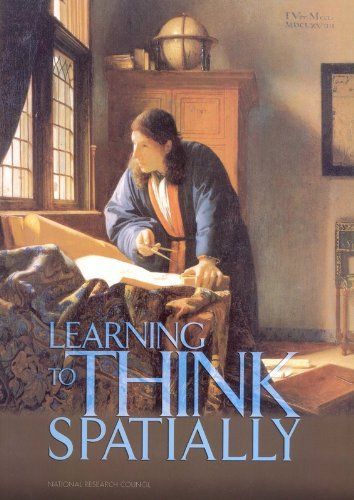
Learning to Think Spatially
Spatial thinkingâ€"a constructive combination of concepts of space, tools of representation, and processes of reasoningâ€"uses space to structure problems, find answers, and express solutions. It is powerful and pervasive in science, the workplace, and everyday life. By visualizing relationships within spatial structures, we can perceive, remember, and analyze the static and dynamic properties of objects and the relationships between objects. Despite its crucial role underpinning the National Standards for Science and Mathematics, spatial thinking is currently not systematically incorporated into the K-12 curriculum. Learning to Think Spatially: GIS as a Support System in the K-12 Curriculum examines how spatial thinking might be incorporated into existing standards-based instruction across the school curriculum. Spatial thinking must be recognized as a fundamental part of K-12 education and as an integrator and a facilitator for problem solving across the curriculum. With advances in computing technologies and the increasing availability of geospatial data, spatial thinking will play a significant role in the information- based economy of the 21st-century. Using appropriately designed support systems tailored to the K-12 context, spatial thinking can be taught formally to all students. A geographic information system (GIS) offers one example of a high-technology support system that can enable students and teachers to practice and apply spatial thinking in many areas of the curriculum.